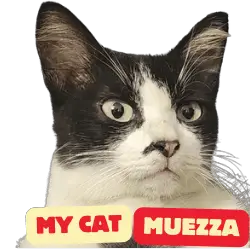Cats are renowned for their impeccable grooming habits, maintaining a pristine coat and overall hygiene with remarkable dedication. This self-cleaning behavior is not only a testament to their fastidious nature but also serves critical health functions. Understanding how cats groom themselves can help pet owners support their feline companions in staying clean and healthy. In this article, we’ll explore the fascinating ways cats maintain their hygiene, from their unique tongue to their meticulous routines, and offer practical tips to enhance their grooming experience.
Why Grooming Is Essential for Cats
Grooming is a fundamental aspect of a cat’s daily life, serving multiple purposes beyond mere cleanliness. This instinctive behavior helps cats regulate body temperature, remove dirt and parasites, and maintain a healthy coat. It also provides an opportunity for cats to monitor their physical condition, detecting any abnormalities early.
- Health and Hygiene Benefits: Grooming removes loose fur, dander, and debris, reducing the risk of skin infections. According to the ASPCA, regular grooming helps distribute natural oils, keeping the coat shiny and skin moisturized. Additionally, it minimizes hairballs by reducing the amount of fur ingested during licking.
- Behavioral and Emotional Significance: Grooming is a self-soothing activity that reduces stress and anxiety. A 2021 study from Cornell University’s College of Veterinary Medicine notes that grooming releases endorphins, promoting relaxation. Owners can support this by ensuring a calm environment during grooming sessions.
How Cats Use Their Tongue for Grooming
A cat’s tongue is a marvel of nature, perfectly designed for grooming. Covered in tiny, backward-facing spines called papillae, the tongue acts like a natural comb, enabling cats to clean their fur with precision.
- The Role of Papillae: These keratin-based spines help remove dirt, loose hair, and parasites. A 2018 study published in Proceedings of the National Academy of Sciences revealed that papillae also wick saliva deep into the fur, enhancing cleaning efficiency. This unique structure makes a cat’s tongue far more effective than any brush.
- Saliva’s Cleaning Properties: Cat saliva contains enzymes like lysozyme that have mild antibacterial properties, helping to keep wounds clean. PetMD advises owners to monitor excessive licking, as it may indicate skin issues or allergies, requiring veterinary attention.
The Grooming Process: Step by Step
Cats follow a systematic grooming routine, often spending up to 50% of their waking hours on self-care. This process is both methodical and thorough, covering every part of their body.
- Face and Head: Cats begin by licking their paws and using them to wipe their face, ears, and eyes. This removes debris and keeps sensitive areas clean. The Humane Society recommends checking a cat’s ears during grooming for signs of mites or infections.
- Body and Tail: Next, cats lick their body, starting from the shoulders and moving toward the tail. They may twist into flexible positions to reach every spot. Adding a brushing routine, as suggested by VCA Animal Hospitals, can reduce shedding and hairballs, especially for long-haired breeds.
- Paws and Legs: Finally, cats clean their paws and legs, ensuring no dirt remains. Owners can assist by trimming claws regularly to prevent dirt buildup, per advice from the American Veterinary Medical Association.
Grooming Challenges and Solutions
While cats are adept at self-grooming, certain factors can hinder their efforts. Age, health conditions, or obesity may limit a cat’s ability to groom effectively, requiring owner intervention.
- Common Issues: Older cats or those with arthritis may struggle to reach certain areas, leading to matted fur or skin issues. Cats with dental problems may avoid grooming due to pain. WebMD suggests regular vet checkups to address underlying health issues affecting grooming.
- How to Help: Brushing your cat weekly with a vet-recommended brush can prevent mats and reduce hairballs. For overweight cats, a vet-guided weight loss plan can restore mobility, enabling better self-grooming, according to the American Animal Hospital Association.
When to Seek Professional Help
While cats are generally self-sufficient, certain situations warrant professional grooming or veterinary care. Recognizing these signs ensures your cat remains healthy and comfortable.
- Signs of Grooming Problems: Excessive scratching, bald patches, or a dull coat may indicate skin conditions, parasites, or allergies. The Merck Veterinary Manual emphasizes prompt veterinary consultation for these symptoms to prevent complications.
- Professional Grooming Benefits: For long-haired breeds or cats with severe matting, professional groomers can provide safe, stress-free care. Banfield Pet Hospital recommends choosing groomers certified by the National Cat Groomers Institute for expertise in feline handling.
Supporting Your Cat’s Grooming Routine
Pet owners play a vital role in complementing their cat’s natural grooming habits. By providing the right tools and environment, you can enhance their hygiene and well-being.
- Tools and Products: Invest in a high-quality cat brush and nail clippers, as recommended by the ASPCA. Avoid human shampoos, which can irritate feline skin; opt for vet-approved products instead. A scratching post can also help cats maintain claw health, per PetMD.
- Creating a Grooming-Friendly Environment: Ensure your cat has a quiet, comfortable space for grooming. Regular cleaning of litter boxes and bedding reduces dirt exposure, supporting their efforts, according to the American Humane Society.
Conclusion
Cats’ remarkable grooming habits showcase their independence and adaptability, keeping them clean and healthy with minimal human intervention. By understanding the science behind their grooming— from their specialized tongue to their meticulous routines—owners can better support their feline friends. Regular brushing, veterinary checkups, and a clean environment enhance these natural behaviors, ensuring your cat thrives. With a little help from you, your cat can maintain its pristine appearance and vibrant health for years to come.



Leave a Reply